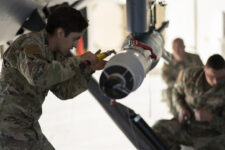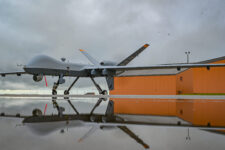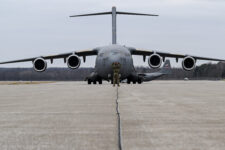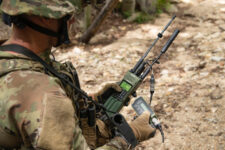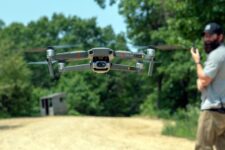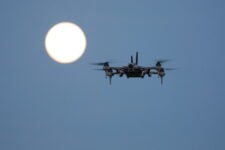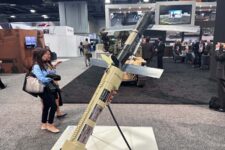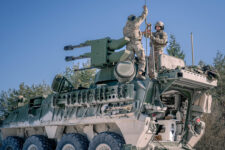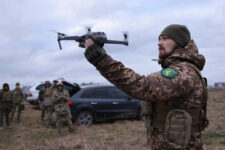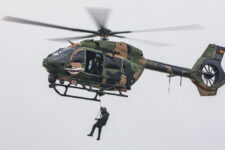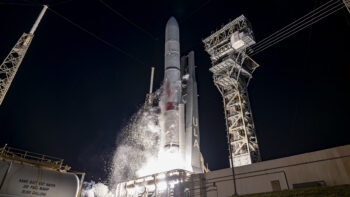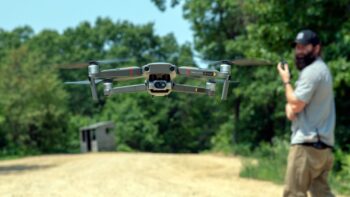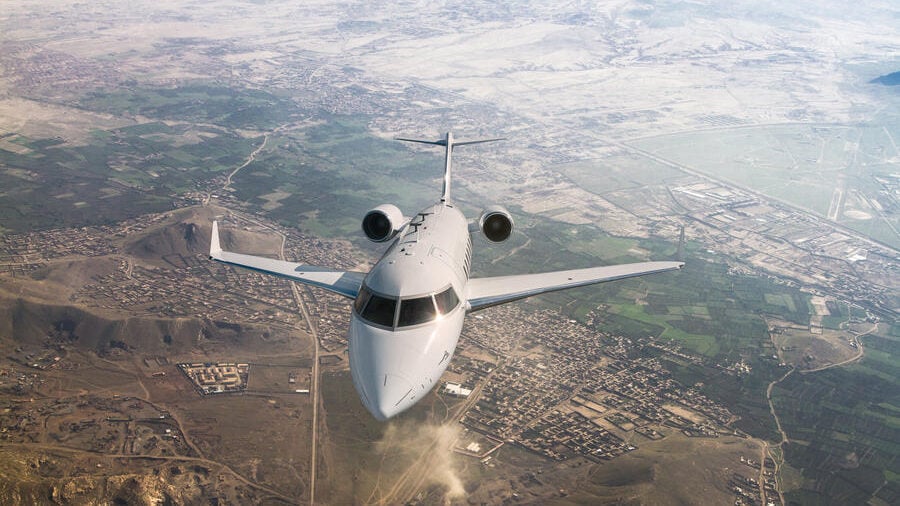
Leidos Special Mission Aircraft (Leidos)
WASHINGTON: Leidos has high hopes for the future of its unique leased aircraft, designed to fly at high altitudes and carry a wide range of sensors everything from signals intelligence to multi-int to help the US Army wage electronic warfare and help with long range fire detection and deep sensing — all keys to countering Chinese and Russian threats.
The Leidos Special Mission Aircraft went from idea and CEO approval to a useful deployed capability in a scant 18 months. Aircraft integration began in August 2019 and the modified plane got its Operational Airworthiness Release at the end of July last year.
The LSMA can support up to six separate rack-mounted equipment stations which gather data through the array of antennas that leave the aircraft looking a bit like an echidna.
Those stations can be removed and wheeled right off the plane, to be replaced by up to 16 seats — to accommodate extra operators, crew or troops — in just hours, the company says.
In some ways LSMA might seem similar to the EC-37B, built by L3Harris, but Leidos’s Matt Pfrommer said the missions aren’t quite the same.
“So, ARTEMIS is about sensing and targeting for Army and joint fires, whereas, my understanding is Compass Call is about non-kinetic effects, creating, you know, electronic warfare effects on the battlefield,” said Pfrommer, VP for airborne solutions. “So while they do overlap a little bit, our mission is not to produce electronic attack. Sensing identification and creating an operational picture of the battlefield.”
Of greatest importance to the Army, the LMSA’s sensors can be mixed and matched as the service wishes. A newly configured plane, which they’re calling ARTEMIS 2.0, is expected to be ready in March 2022. This comes after two extensive deployments to both the Pacific and European theaters, flying more than 569 mission hours and boasting an impressive readiness rate of more than 90% in 2020.
This year it deployed to Europe and took part in Experimental Demonstration Gateway Exercise 21 (EDGE). A few days ago it arrived and prepared for the Army’s groundbreaking Project Convergence, where it will operate over the next 60 days. After that, the plane heads back to European Command.
This all began when an urgent needs requirement was issued for the aircraft’s capabilities on Sept. 26, 2019 by OSD (probably by the USDI office), so there was a demonstrated and recognized need for it.
Leidos bought a Bombardier Challenger 650 that boasts a 4,000NM range, which can translate into a 10-hour loiter period near the targets. Its sensors and physics allow it to operate out of range of Russian or Chinese anti-aircraft systems, while still making them and other key assets targets, the company says.
Perhaps the most intriguing part of the ARTEMIS effort is the business model. The aircraft is contractor owned and operated. Leidos will integrate the sensors, data systems and all the ancillaries on the aircraft; fly it; maintain and support it; own it; and sell sort of a Netflix-like monthly subscription to the service.
It appears to be working as Leidos has that second aircraft under development.
Breaking Defense spoke with Leidos about the Special Mission Aircraft in 2019:
